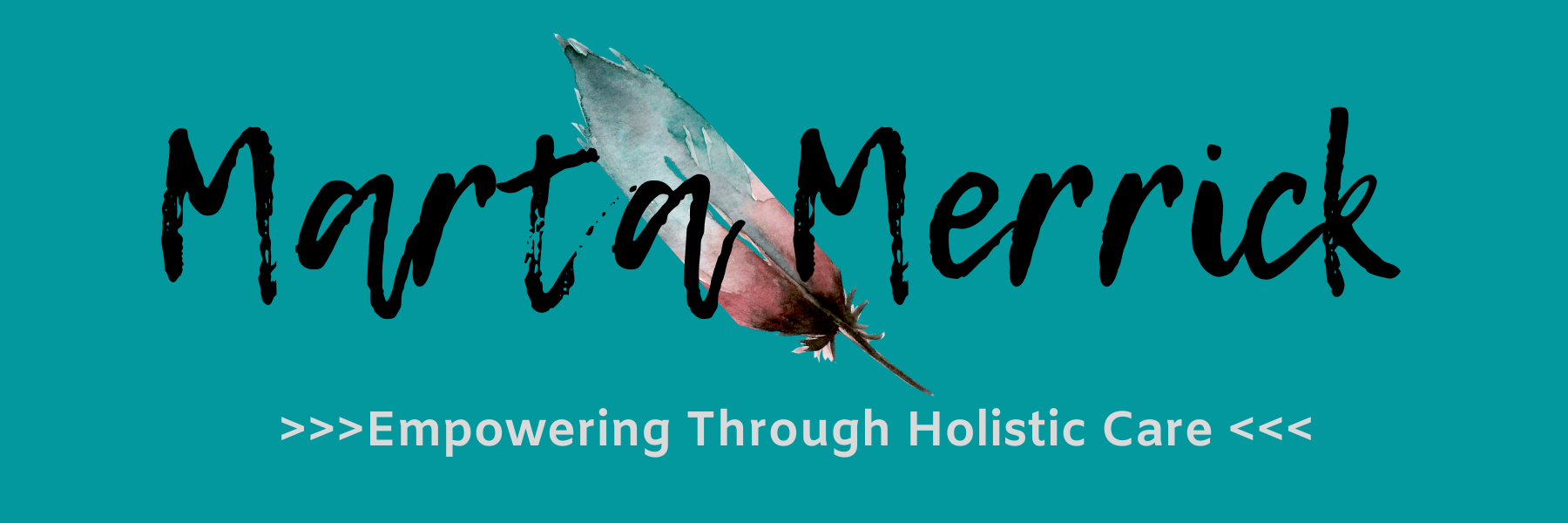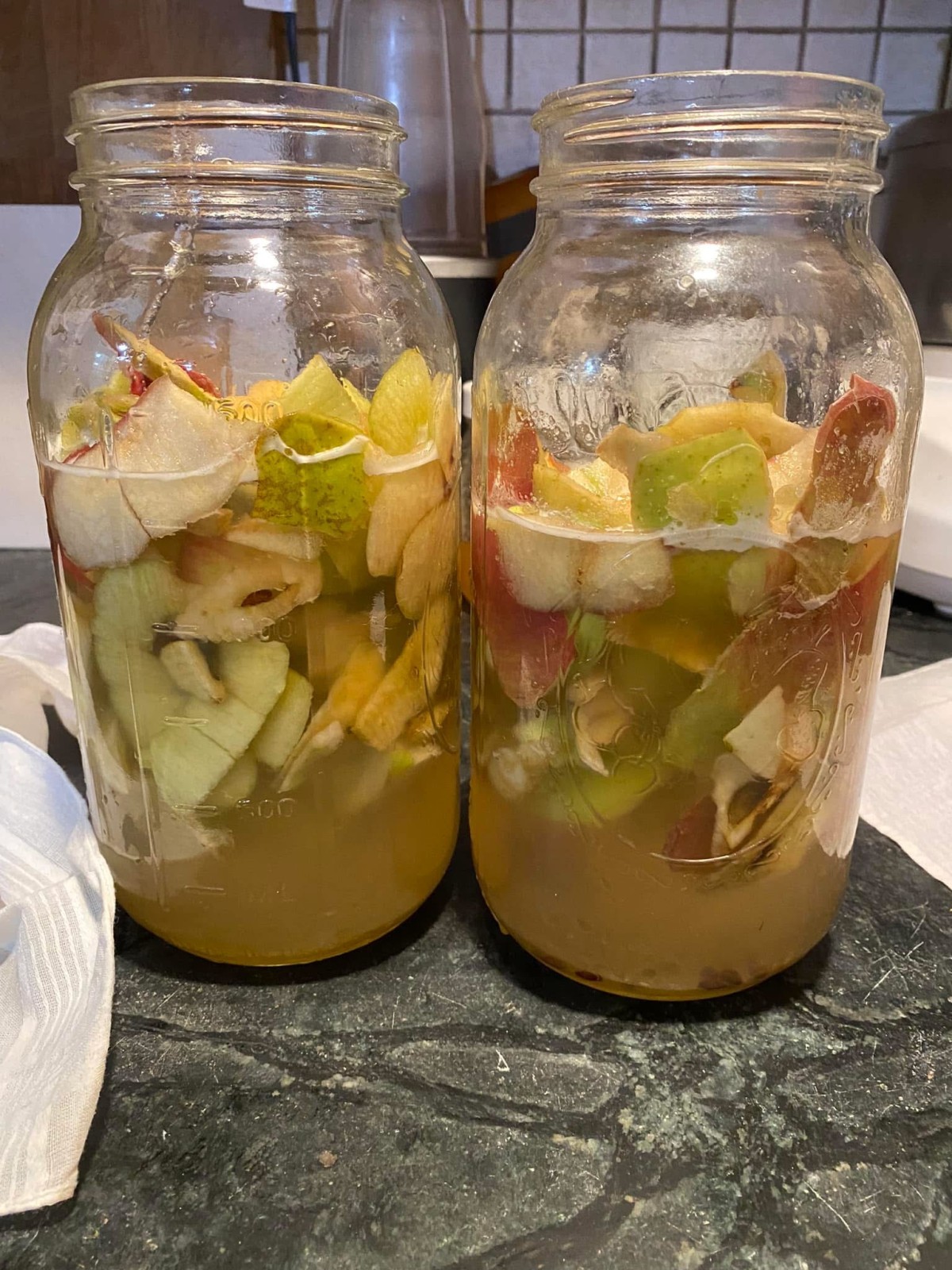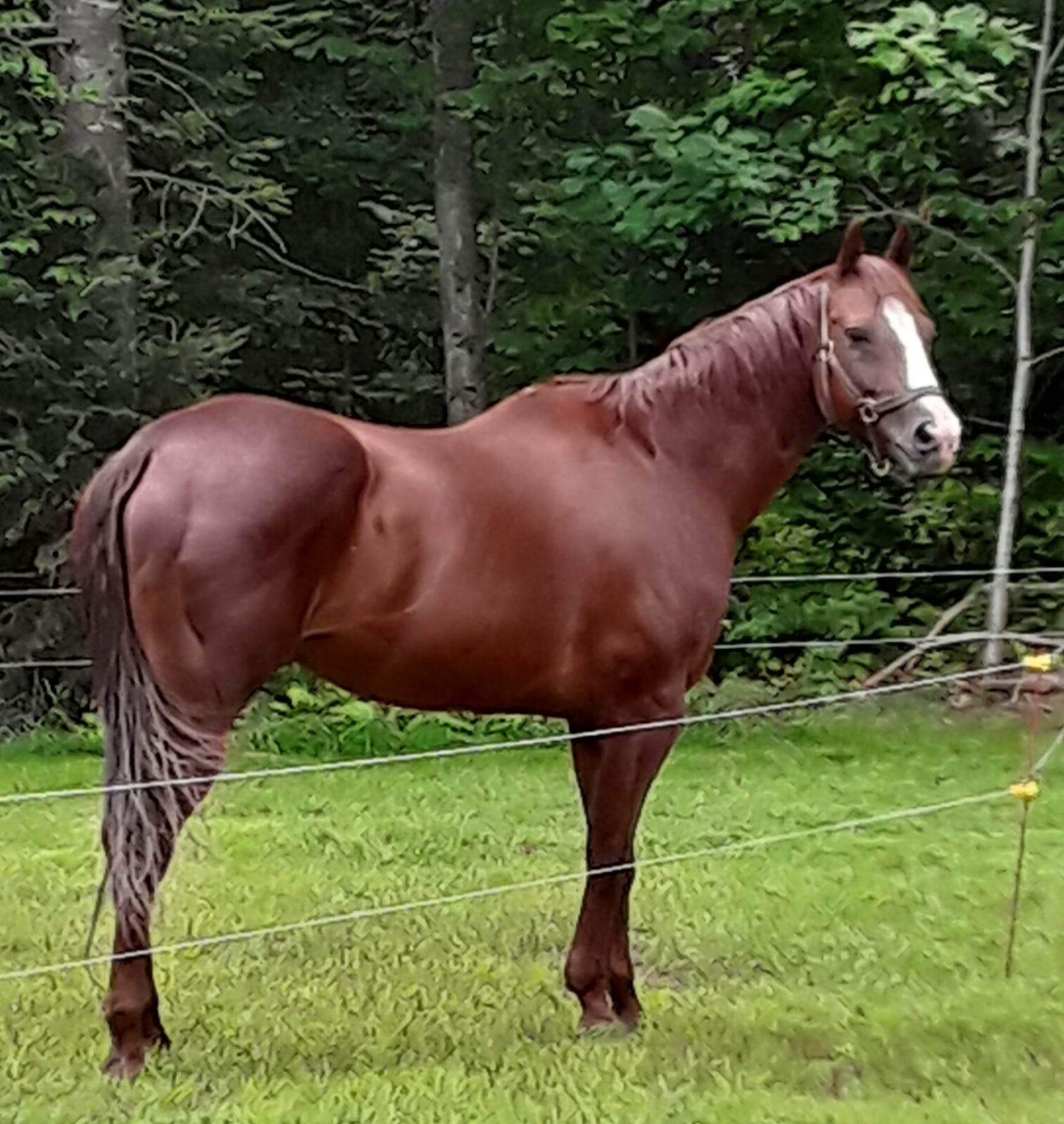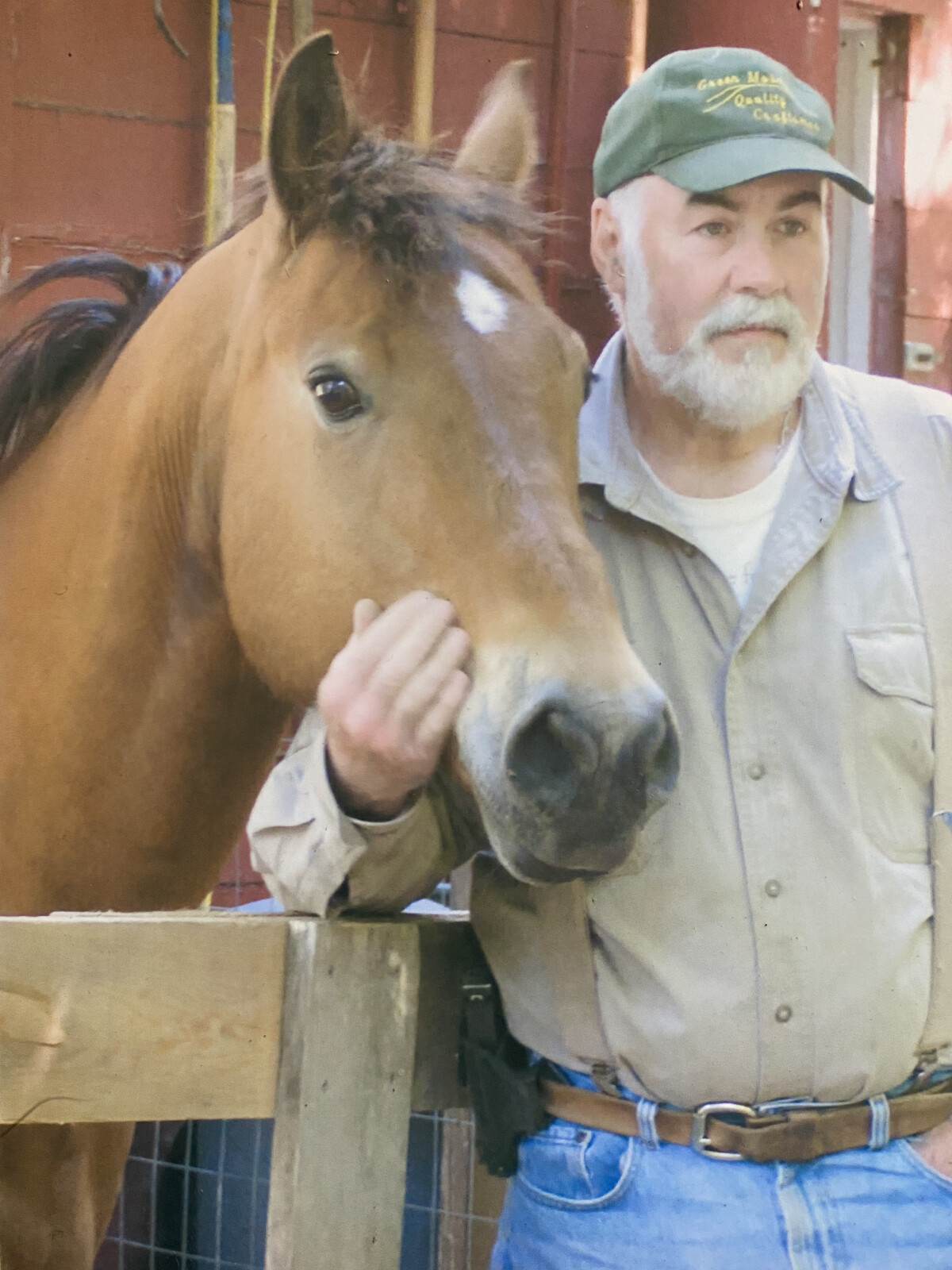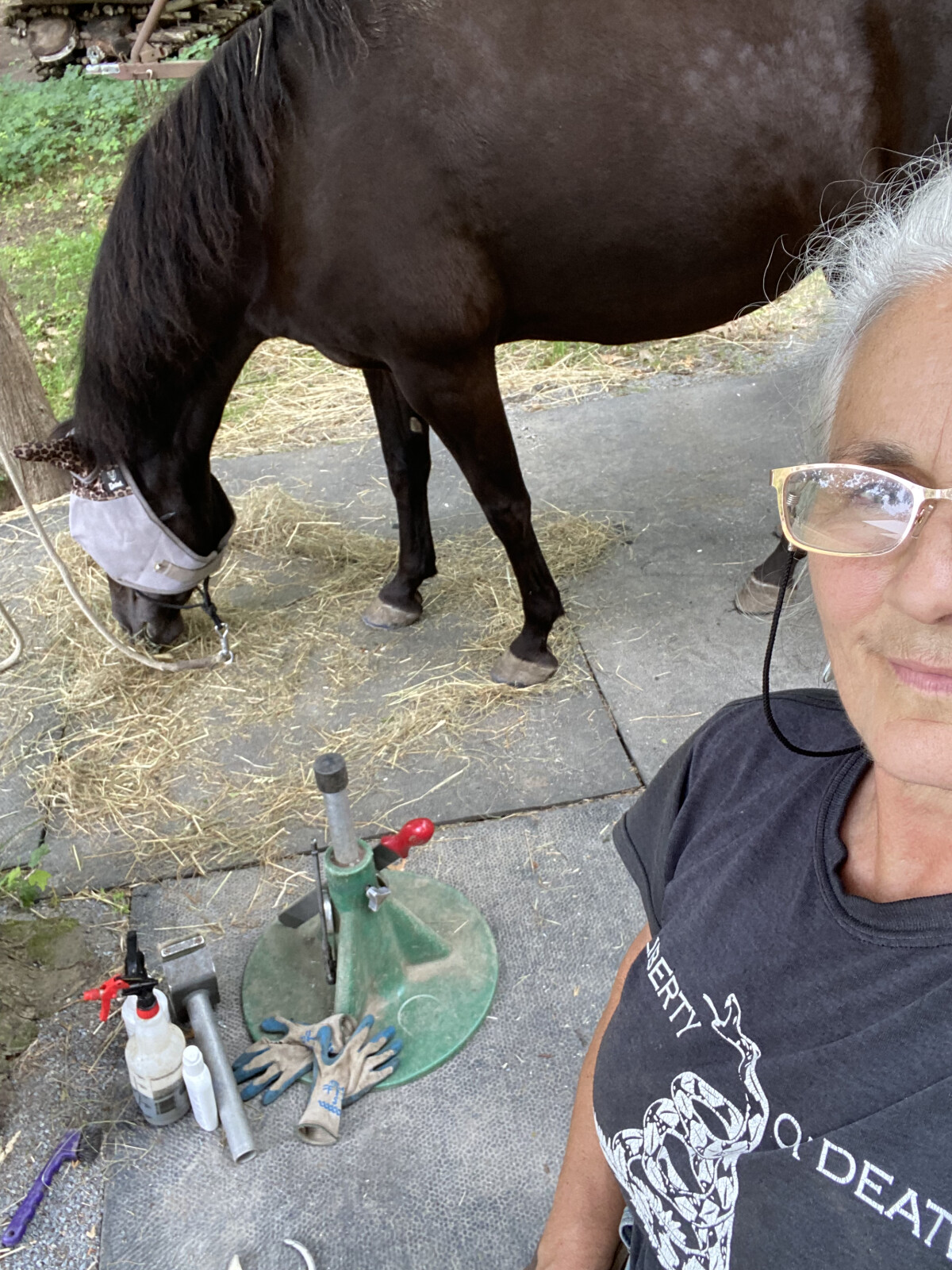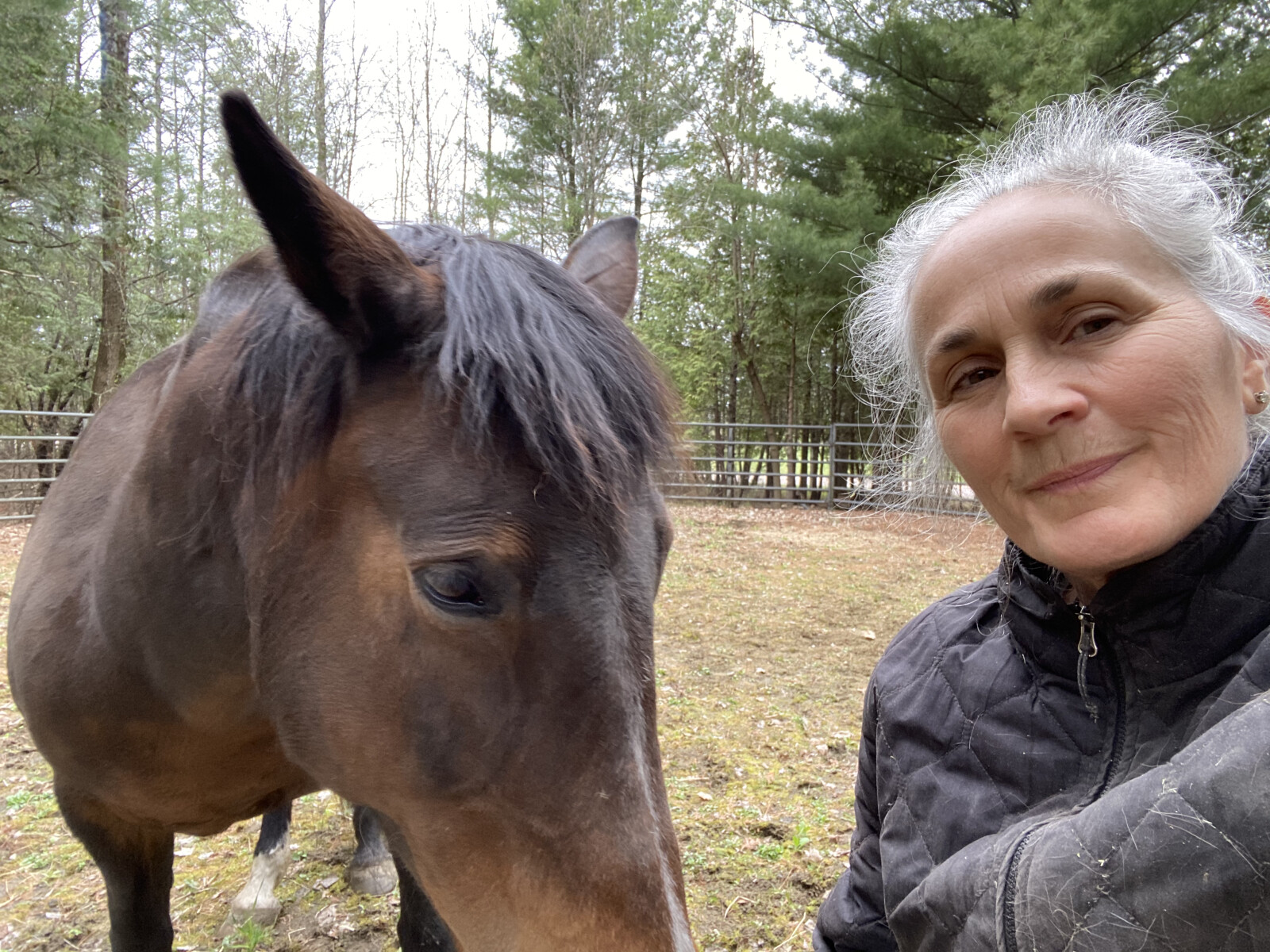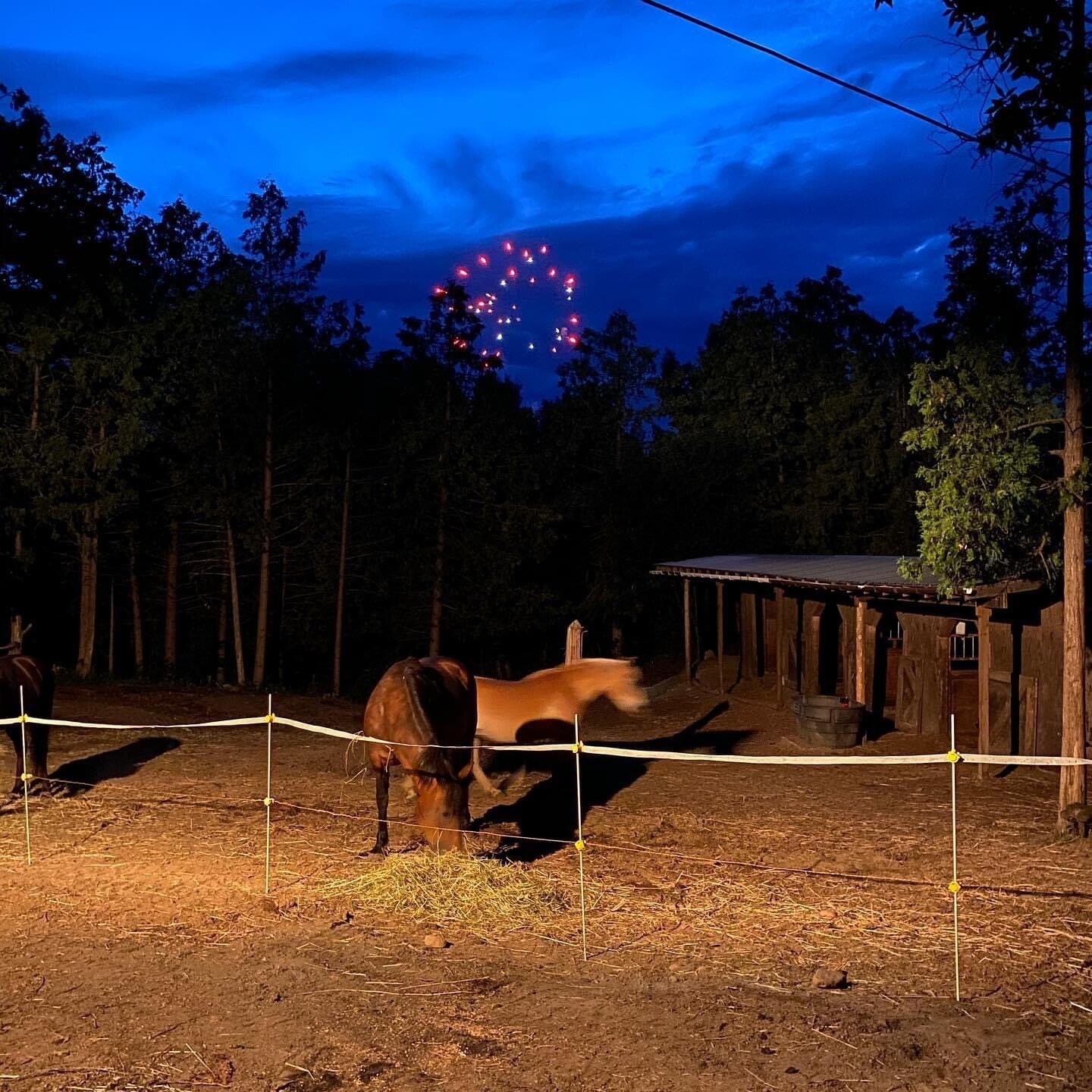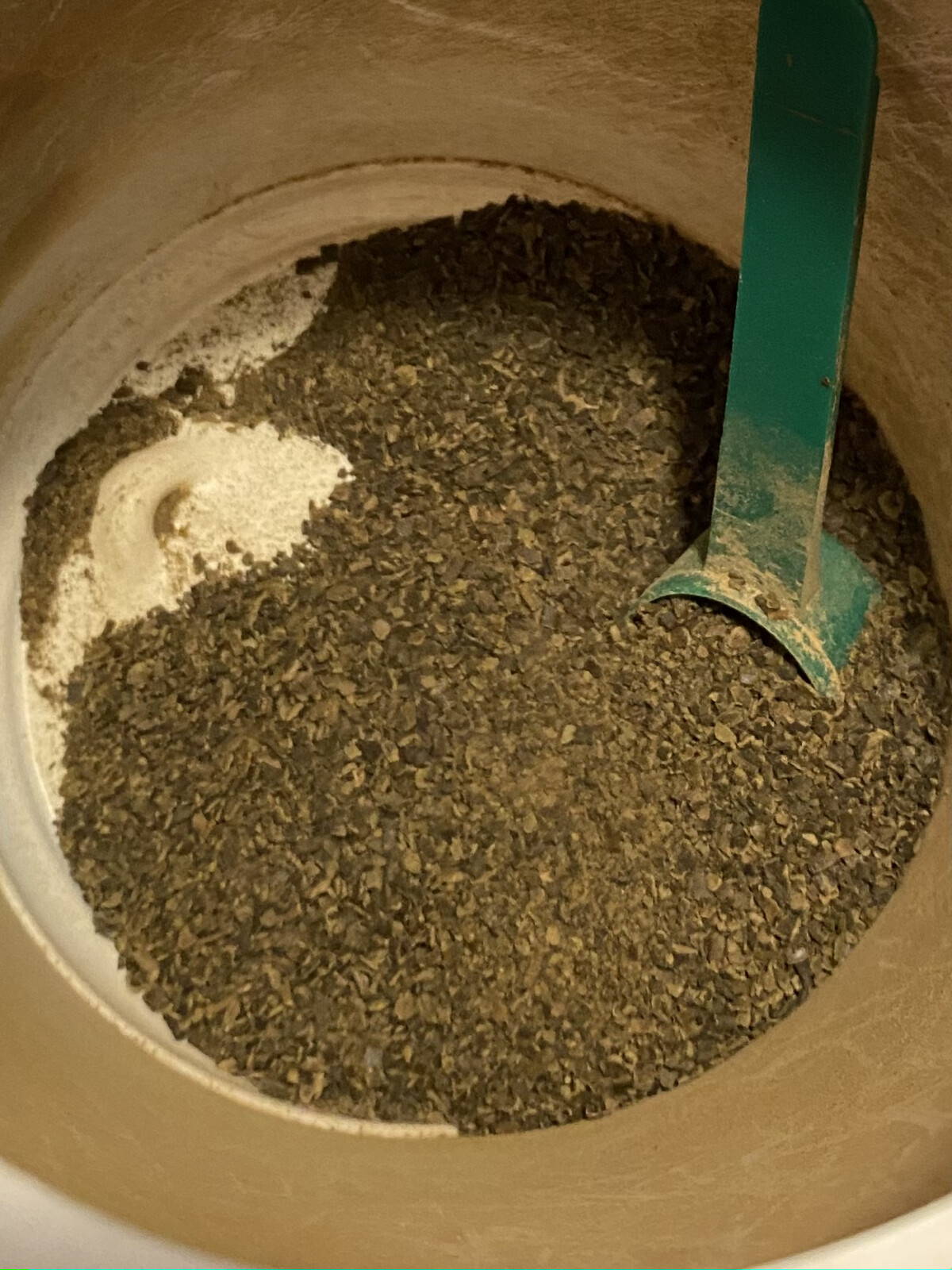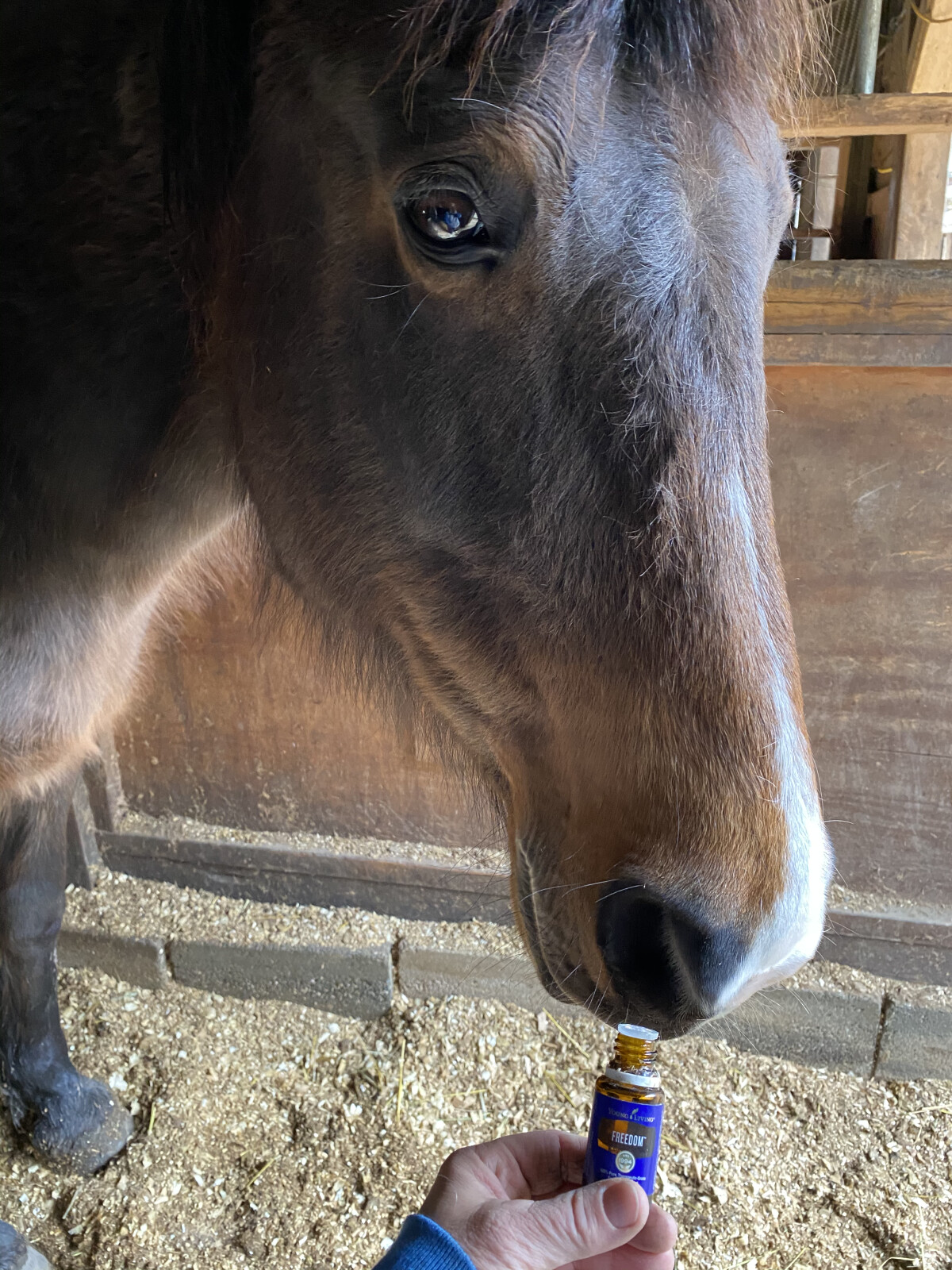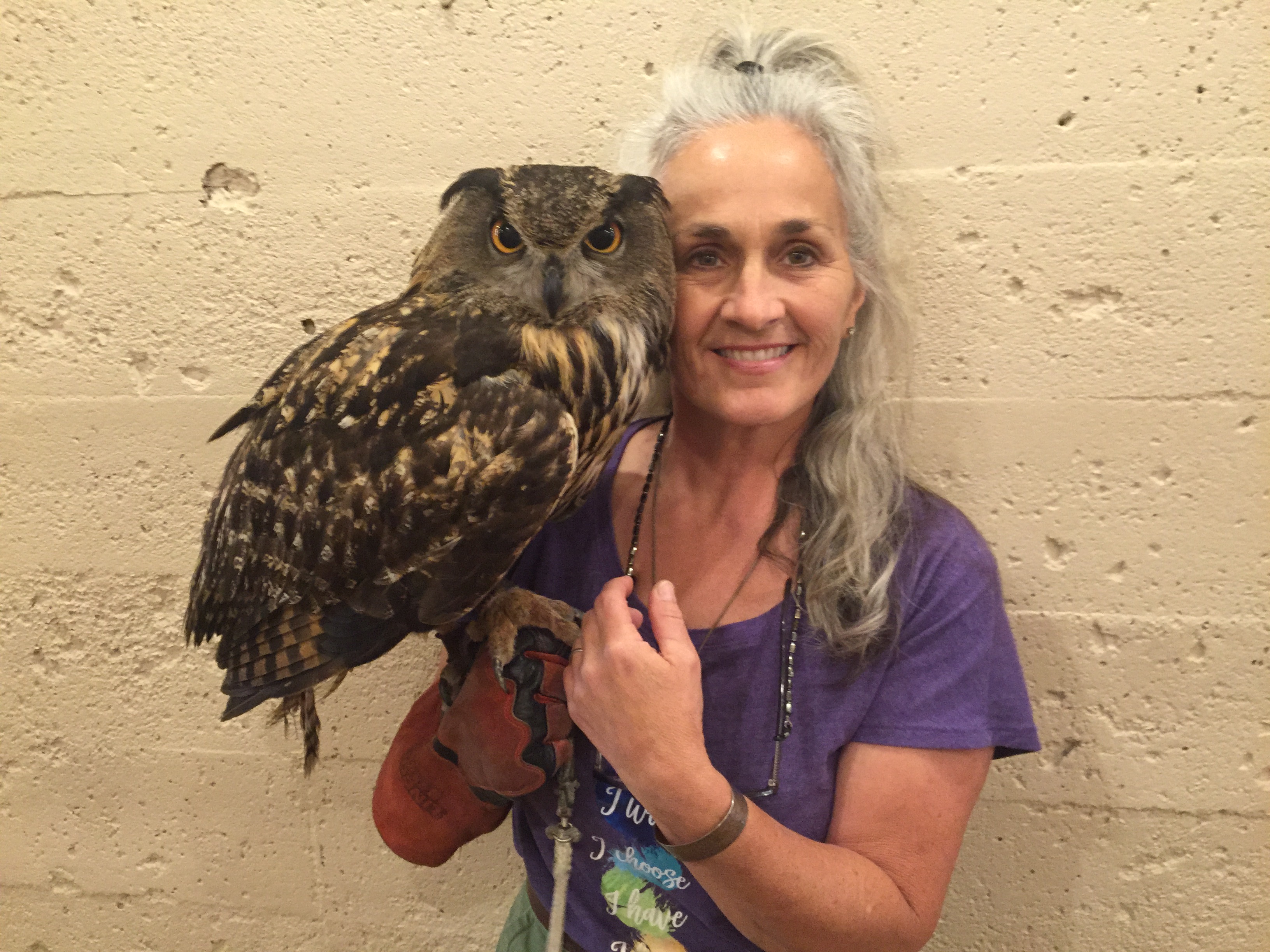
We live on about 3 acres of rocky limestone hillsides loaded with cedar trees and roots! While it’s not what one would think of as an ideal horse environment, it is actually a far better choice of living space, especially if your horse has metabolic challenges.
At the beginning of my horse journey, I was introduced to the benefits of creating a track system for my horses’ living environment. It benefitted their hooves, their digestion, in general their overall wellness. It was easy for me to see this was what I wanted for my horses. In addition, the concept fit extremely well with our small acreage and varied terrain. We even have access to an old road to utilize which has a great hard packed base for a trail.
As fate would have it, I acquired a couple of foundered horses (from my trimming practice) as well as a Morgan horse (a hardy breed that does not need rich feed to maintain weight and good health). Our track system has proved to be the ideal living set up for horses with metabolic issues, hoof troubles and for avoiding the problems with spring and fall grasses.
Our track contains no lush grass. It does offer a variety of plants, shrubs and trees that our horses browse as they move around the different paths on the track system. We have the benefit of monitoring our horses’ grass intake by allowing them to roam the rest of the property at strategic times to benefit them. We choose times when the sugars are lowest in the grass. When the sun is out, plants are producing their sugars for energy through photosynthesis. This is high sugar content time and should be avoided. It is at night when the grasses use up their sugar stores from the day, so the very early morning is the safest time for the lowest sugar levels.
Once the fall comes and the temperatures drop at night, grass begins to hold onto their sugar stores for its growth. This “stressed” grass is now very high in sugar. Any stressed grass will have increased sugar levels so be aware, especially for your at risk horses. Some other ways that grass gets stressed are by over-grazing, drought and frost. Even the brown grass late in the fall when it’s still warm during the day will have sugar filled green sprouts that your horse would love to snack on!
Waiting for the temperature swings to stop and the grasses to go dormant is a safe option for your horse.
Other safe options…
- Consider setting up a track system or at least elements of it for your horse. Creating a forage based, movement centered space will do wonders for them!
- Create a dry lot for your horse and encourage movement within the space through the placement of hay bags or hay piles.
- Use a muzzle and monitor their time of day out as well as the amount of time out.
- Consider a probiotic to benefit their gut health. This is a key component to overall health. Life 9 is the probiotic I love and use for my herd.
If you’re curious to learn more about setting up your own track system, take a look at Guide 3 in my community The Hearts of Horses; Empowering Through Holistic Care. You’ll find videos with information on how to create your own track system.
May you and your horses enjoy this fall season in good health...
Marta
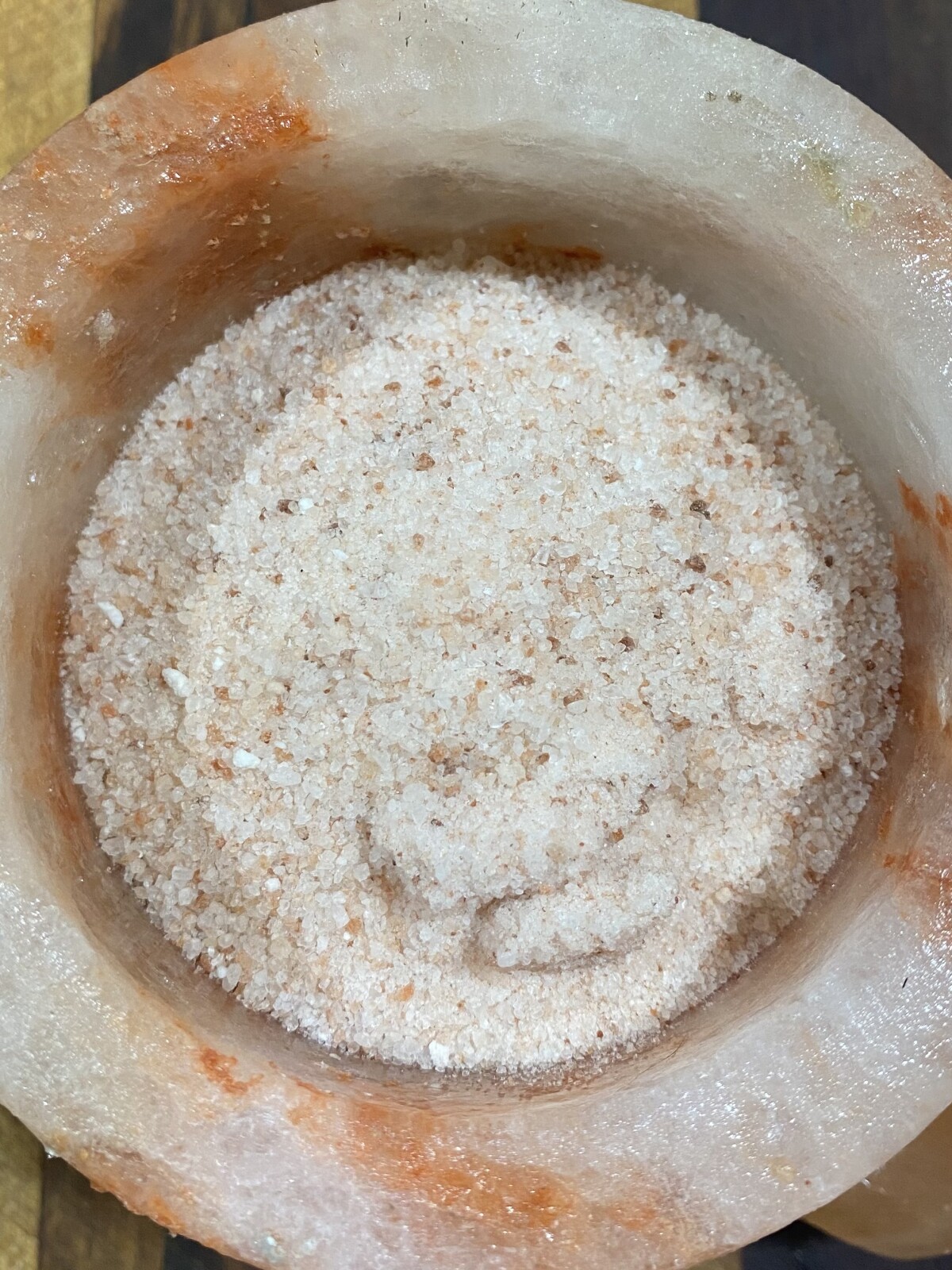
A recent post that I shared in my Hearts of Horses group about the importance of salt for our horses especially in hot weather, opened a discussion on the use of Himalayan salt. It got me wondering…so I did a little research.
The only mineral which a horse has a taste for is salt. In situations where an animal is deprived or deficient, they will seek it out readily. As caregivers for our horses, it is critical that we provide some form of salt, as many functions of the body depend upon it.
Some of these critical functions are…
- Heart contraction
- Intestinal movement and fluid balance
- Absorption of nutrients in the gut
- Muscle contraction
- Nerve function
- PH balance
- Keeping the body hydrated
- An averaged size horse, in cool weather, needs a minimum of 1 oz per day of salt. 2-4 oz for that same horse in hot weather.
Legend has it that the salt beds of Pakistan were discovered by Alexander the Great’s horse, Bucephalus, who stopped to paw and have a lick! Side note: Bucephalus died in battle in that area and a town was later named after him.
Much of the Himalayan salt we purchase originates from an area of hills in Pakistan known as the “salt range” which is hundreds of miles away from the Himalayan Mountains. The hills are a remnant of a lagoon that existed 600 million years ago.
This Himalayan salt does contain minerals, but only in very minute amounts. Such minerals as magnesium, zinc, calcium and even iron. Again, they contain only very minute amounts that would not be enough to consider as a supplement for your horse.
The fact that Himalayan salt is very hard, in chunk form, your horse would not be able to bite it. Even with steady licking, they would not be able to consume the minimum needed on a daily basis especially in hot weather! However, the salt chunk is resistant to rain so hanging it for your horse, in or out of the stall/barn area would be a great relief and/or distraction during a confinement situation.
The fact that it is salt, means that it does encourage your horse to drink more water. This is always a good thing as approximately 70% the body is water and many body functions also require it!
There is one very important mineral that you cannot get from Himalayan salt though and that is iodine. Iodine is necessary for healthy thyroid function. The thyroid regulates hormones and is easily thrown out of balance by deficiency and/or toxins that are in many horse care products. Granulated iodized white salt covers your bases on this one. Or if you feed a kelp product your horse is probably already receiving their necessary amount of iodine.
While the benefits and popularity of the Himalayan salt make it seem terrific for your horse, the bottom line is… it is safe and ok for your horse. It can even be included in the salt/mineral area of your track set up. It would also be beneficial as a relief and distraction for a confined horse.
The big question you want to ask yourself is… are my horses getting their minimum daily requirements for salt? The easiest way for them to get this is by providing a granulated salt, either in their feed or free choice in their living space as they generally cannot take in enough by licking a block.
Are you interested in more helpful information for caring for your horses? Join the community I mentioned, The Hearts of Horses; Empowering Through Holistic Care and be sure to look through the GUIDE section at the top of the page for all kinds of helpful holistic care topics!
All the Best,
Marta
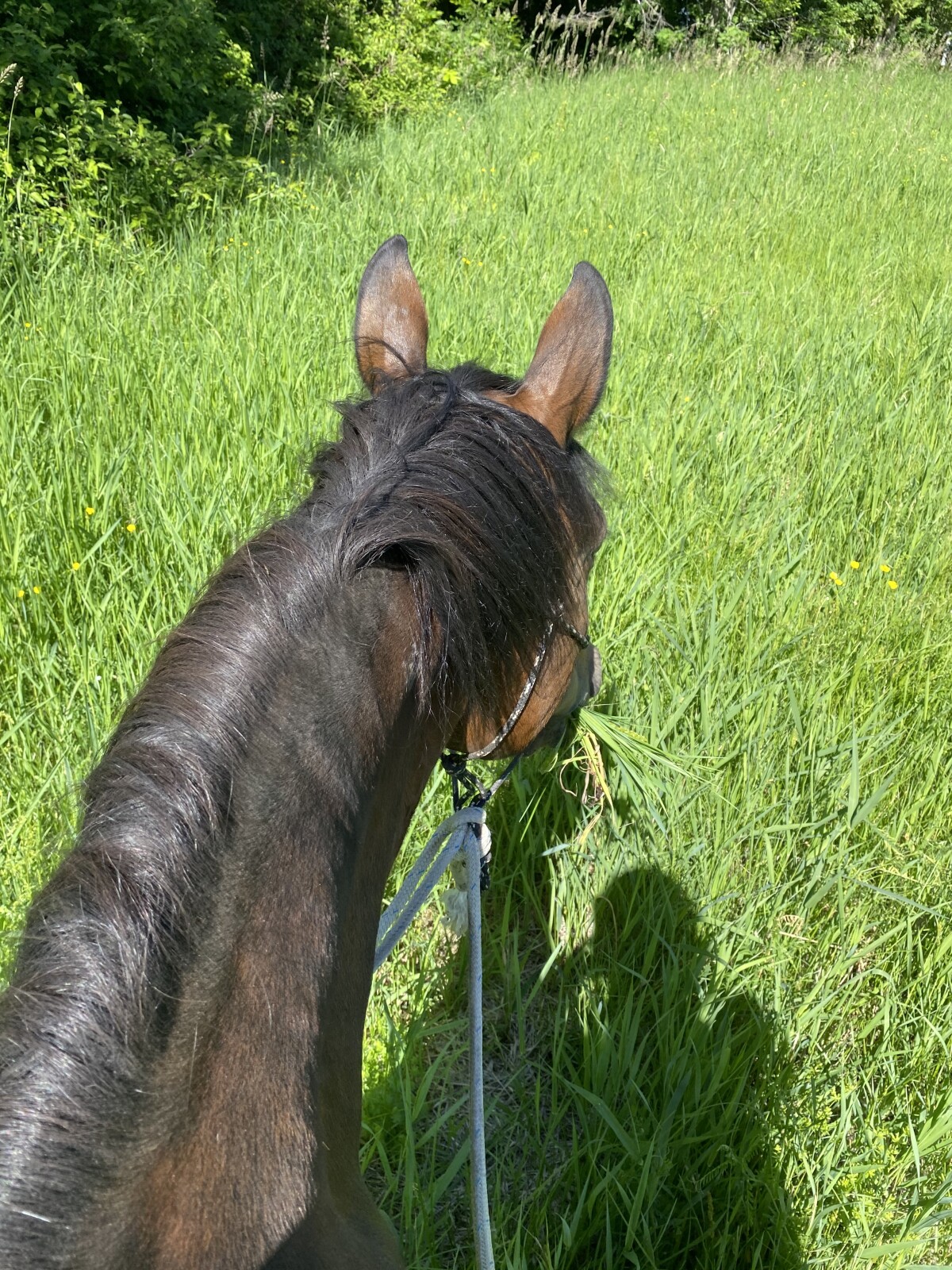
Early on, when I got started with horses, I learned traditional ways to care for them. This involved chemical fly sprays, ointments that contained potential carcinogens and other questionable chemicals in a variety of products including their food.
Along the way, as I was learning, I was drawn to more holistic ways of caring for my horses. Following my heart, with regard to these ways, has led me on a path of discovery, healing and much healthier horses!
When I first got Calli, every year she would get bit up by the little No-see-ums that come out in May at our wooded home. They would bite her on her underside and she would end up having a crusty line of gunk from her chin to her udders! Definitely gross and I'm sure uncomfortable for her.
Things started looking up when I started using a plant based cleaner on these areas of her body. The crusty stuff started disappearing and there was not as much of it covering her underside. I was super happy about that! I had been learning about these new holistic care options and part of that process was removing the products that had toxic chemicals in them. The fact that I was reducing the amount of toxins in her world was making a difference for her and helping to keep these bugs at bay.
Adding an essential oil to her daily feed was another thing I did. It served to improve her immune system. It is such a huge benefit at a very small price! Adding the oil along with the spray (which also helps to improve her immune system) really made a huge difference for this "seasonal" problem.
Another piece of this puzzle that was beneficial, because it removed toxins and sugar, was getting rid of the processed grains that we had been feeding. Processed grains have chemicals and toxins added to them along with a significant amount of sugar (which causes inflammation). All of our horses are on an anti-inflammatory diet. It is better for joints, over all wellness and, I believe, makes them less tasty to the bugs too!
As we are now into another May, I am happy to say that its been quite a few years since we've had to deal with the crusty underside! And there are few and far between reactions to bug bites now that we have addressed removing toxins and improved immune systems.
If you're interested in knowing what products I used, check out this brief video...
If you're interested in more holistic care information for your horses, join our community...

Goin’ Bare…It’s Easier Than You Think For Your Horse To Go Barefoot!
There are, however, some key lifestyle factors that are critical to include in your horse’s life in order for the transition to be successful! First, the hooves need proper nutrients to grow in healthy, strong and well-connected, there needs to be stimulation through movement over varied terrain, you’ll need a regular trimming schedule either by a professional or by learning to trim your own horses and lastly, there will be a transition period where the hooves will need protection with padded boots.
Let’s look at nutrition first. It’s a great place to start to grow healthy hooves. One of the most detrimental ingredients that ruins more feet… is sugar! There are hidden sugars in so much of what is given to our horses. Everything from grain to supplements to treats. It is in virtually every item that goes into your horses mouth, including grass and hay! Understanding and controlling the sugar in your horses diet is going to be a major step in going barefoot with your horses. One of the easiest ways to do this is put your horse on an anti-inflammatory diet. This means you primarily feed grass hay and provide minerals needed that are not accounted for in the hay. If other feeds are needed look at whole foods like flax, chia or hemp seeds that add beneficial Omega-3’s. The important thing is to avoid processed grains and ingredients like corn, soy and molasses. There is also a supplement that I started giving mine for joint health yet realized how great it was for creating healthy, strong feet! It contains the building blocks for good skin, hair and hoof growth. You can read about it here. And if you'd like more information on the basic nutrition for your horse's needs, check out the guide I made up here.
Next you’ll want to make sure you’re encouraging your horses to move in their home environment. The hoof is a blood pumping mechanism who’s purpose is to expand and contract to pump blood back through the rest of the body. The simple act of spreading hay into multiple piles in their environment will encourage them to move and eat. Putting up a series of hay bag stations around their space will offer the same benefit as well. By incorporating this simple feature you will be encouraging the growth of healthier, stronger hooves as well as supporting a healthy digestive system! Include, in some high travel areas, abrasive terrain to help stimulate and condition the foot to grow a more dense sole and create go-anywhere hooves!
Maintaining a regular trimming cycle for your horse’s rate of growth is crucial to going barefoot. The cycle can vary depending upon your horse’s nutrition and even the amount of wear their hooves get. In some environments horses can self- maintain their hooves! For many though setting up a 4-6 week schedule to maintain a healthy foot is a good guideline. Finding a good barefoot trimmer is helpful or if you are so inclined, you can learn to do the trimming for yourself. With the help of your trimmer checking in on you, it is possible for you to learn to use a rasp and knife to maintain your horse’s hoof walls and bars. Of course there is some learning that needs to happen first and practice with guidance. Taking an active role with your trimmer right now can set you on that path. Asking questions, paying attention at your trimming sessions and in general being curious about your horse’s feet. If trimming your own horses is something you’d like to pursue, I have a go at your own pace course along with a FB support group for any help you might need. Get the course here.
Lastly, your horse will most likely need some sort of padded hoof boot protection for a period of time. This time will vary for each horse. The factors I talked about above and how well you have incorporated them into your horse’s lifestyle will have a great impact on this. Having been an Easy Care dealer when I had my practice, I am partial to them. However, the important thing here is finding a boot that fits and will stay on well while your horse is out with his herd. Boots need to be taken off daily to give the foot time to “breathe” and to check for rub spots or any other possible discomfort. Utilizing boots to protect your horses hoof and reduce any potential pain in this process will significantly impact their transition time.
Are you interested in learning more about transitioning your horse out of shoes, nutrition, booting or living a healthy, holistic lifestyle? Maybe you'd like to check out a free workshop on hooves? Its all in here... The Hearts Of Horses; Empowering Through Holistic Care

Before I discuss the five ways to help calm your horse holistically, I’d like to give you two key characteristics to keep in mind that are necessary for raising kids, training animals or running a business--- Honesty and Consistency. With these two qualities you will surely have success, especially with your horses. Animals are honest…they know no other way. It is one of the reasons they are so good for us. They help us to become better for ourselves and for them. The consistency part can be difficult for us. It means doing the same thing, in sequence, repeatedly. It also means offering the same (non-emotional) response to undesired behavior. Horses learn patterns 7 times faster than humans. So be sure to pay attention to what you are doing BEFORE, because they’re already 7 steps ahead!
Now let’s talk about the 5 ways to calm your horse, holistically…
1. Get your horse out of the stall and moving! Horses are herd animals who live in small bands that cover approximately 25 miles a day in their wild setting. Their range revolves around the water hole. There are also a variety of “events” within the range that keep the horses moving to the next one! Knowing what these are and incorporating them into your horse’s environment will contribute to a more balanced emotional state. There are “events” like the water hole, the bathing/grooming area, a resting area, a salt/minerals lick and more. The “vices” that come into play with horses in stalls, become virtually non-existent when they are allowed to move as a herd.
2. Play with your horse! Get to know them on the ground and learn to have a conversation with them. Allow them to have a choice and a say in what you are doing. Remember you are developing a friendship/partnership where you each have responsibilities. Can you imagine hanging out with a friend who is always telling you what to do and never asks what you like or want?!
Asking your horse to change directions gets them into their thinking (left) side of their brain instead of the emotional (right) side of the brain. So if your horse is getting all wound up and excited, AVOID the lunging circle! Get your back to a fence and get them changing direction. They’ll soon come off their adrenaline high and begin thinking again. Asking your horse to move backwards and sideways also requires using the thinking side of the brain. These two movements are definitely a great thing to incorporate into your regular routine with your horse!
3. Feed your horse like a horse! It’s so easy to want to give our horses all the things. Admit it, it makes us feel better. The fact is most grains and treats are loaded with sugars and can be deadly to our horses. Horses are browsers. Browsing for small amounts of plants while moving all-day-long. Setting up the environment so they can eat this way will reduce many of the “problems” we see with traditional horse keeping. It could be as simple as spreading the hay into many piles (instead of one or two) so that horses can push their herd mates to the next pile. There should always be more piles than horses!
Another key part of nutrition are the minerals. This is often overlooked and one of the key pieces of their overall emotional wellness. Magnesium plays a large role here too! Get your hay tested to find out the minerals you will need to supplement. For more information on providing a good foundation of nutrition for your horse, get this guide.
4. Use essential oil blends and singles daily for your horse’s emotional fitness! A few of my favorites are Peace and Calming, Valor and Stress Away. They were instrumental in my hoof trimming business for helping to settle an unsettled horse (and owner too)! I could offer a drop in my hand to the horse and depending upon their need; they may sniff it, lick it from my hand or sometimes they’d grab the whole bottle! That seemed to happen a lot with Stress Away. There are a few other oils used in protocols that I have found to offer incredible emotional releases and help to balance the horse’s energy. These are the Feelings Kit, Freedom Sleep and Freedom Release Collection.
5. Lastly, incorporating Healing Touch for Animals has forever changed my animal care for the better. I can help my animals to be calm and release experiences that are causing them to feel or behave in unwanted ways. Learning the techniques from the Level 1 online course have allowed me to not only help my horses (dogs and cats too) live better… I have been able to help other people’s horses to feel relief from traumatic events, to release traumas they have carried and to get their energy open and flowing again. If you have horses (or any animal) the Level 1 is a wonderful addition to your holistic care tool box. Click here for more information about the Healing Touch for Animals Level 1 online course.
Having a calm horse is something virtually anyone can achieve. By taking the time to understand the things that motivate a horse (and are innate in them), you can begin to put each facet in place in their environment as you care for and interact with them. For me, each of these has contributed to the emotional balance of my horses as, over the years, I learned and incorporated them into my life with horses. I am forever grateful to have learned these holistic care ways. I hope you take the opportunity to incorporate some of them too!
If you have questions or choose to learn more, join my free Face Book group...
